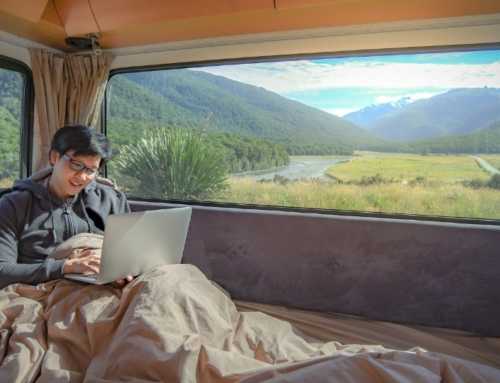When things don’t quite work, at jdp, we find a better way, that includes terminology. The vocabulary used to describe business and marketing strategy can be extremely limiting and doesn’t reflect our goals. So we decided to come up with our own terms to let our customers and clients know exactly what we offer and how we diverge from the same old trodden path.
Thus the term “virtual environment” was born. Before you start thinking about people wearing contraptions on their heads bumping into furniture, let’s jump straight into what it means.
The term “virtual environment” sprang out of our discontent with the term “online presence”. Not only does “online presence” make it sound like you’re lurking around like an unwanted phantom on the internet, but it also sounds like you’re doing the bare minimum (“Hey, I showed up, what more do you want?”) It also says nothing of the customer experience.
All in all, the term “online presence” doesn’t encapsulate what we do as a company. We don’t want our clients to just “show up” on the internet with a website and social media accounts, we create space for them to easily and comfortably connect with their customers. The term “virtual environment” encapsulates this very idea. So your customers can’t necessarily come to your office or shop, but they can experience your business virtually in the spaces you create for them online.
So when we say “virtual environment” what exactly are we referring to? Let’s break it down.
1. Website
If you think about it, the term website also eludes to space, an environment. A “site” is a place where the action happens. Obviously, the term is so ubiquitous now, that the etymology of the word isn’t exactly at the fore of our minds when we use it. But it would be helpful if more web designers were more cognizant of the idea that we’re creating a space for people to use.
When handcrafting websites for our clients, we like to think of a website as a three-dimensional space for their customers to comfortably explore and interact with. We like to draw parallels between creating a physical space and a virtual space online. The storefront, the personnel on the front desk and at the counter, and the interior decor all speak volumes about your business, and you wouldn’t skimp on any of those factors, so why should you be online?
Referring to websites as part of a virtual environment enables us to remember the purpose of a website – to create a space for your business to communicate with and facilitate your customers with ease, and a positive experience for all those who visit.
2. Social media and digital footprint
Social media channels also fall under the term “virtual environment” since they’re also spaces for your customers to interact with you and spaces over which you have plenty of creative control. This is where you get to showcase your business language and connect with your customers directly in an environment that is familiar to them.
By digital footprint, we refer to anywhere where your business is mentioned or linked to, be it on other social media channels, on blogs, forums, etc. Getting the word out there about your business is an important marketing strategy for most businesses. Anywhere your business is mentioned comprises the makeup of your business online.
3. Internal business processes
So far we’ve referred to customers interacting with your business online. But there’s another factor that fits neatly into the term “virtual environment”, and that is the environment you create for your employees online.
As more and more people work remotely, and as businesses switch to contracting freelancers, you need an online office space of sorts to reflect your business and set a standard for how you operate. This is another space in which your business exists virtually and defining this space with a proper framework will enable your business to run more efficiently, effectively, and consistently.
In our other articles, you may see us using the term “virtual environment” and mistake it as simply being interchangeable with the word “website”. But such is the jdp approach that we never take one aspect of your business in isolation. Instead, we look at your business holistically, each aspect affects another, it’s one big moving part. The term “virtual environment” better expresses how we think about online business.
If you need help making sense of any aspect of your virtual environment,get in touch for a free consultation. We’ll lift the hood on your business and see what needs fixing, altering, or touching up to improve your business performance.





